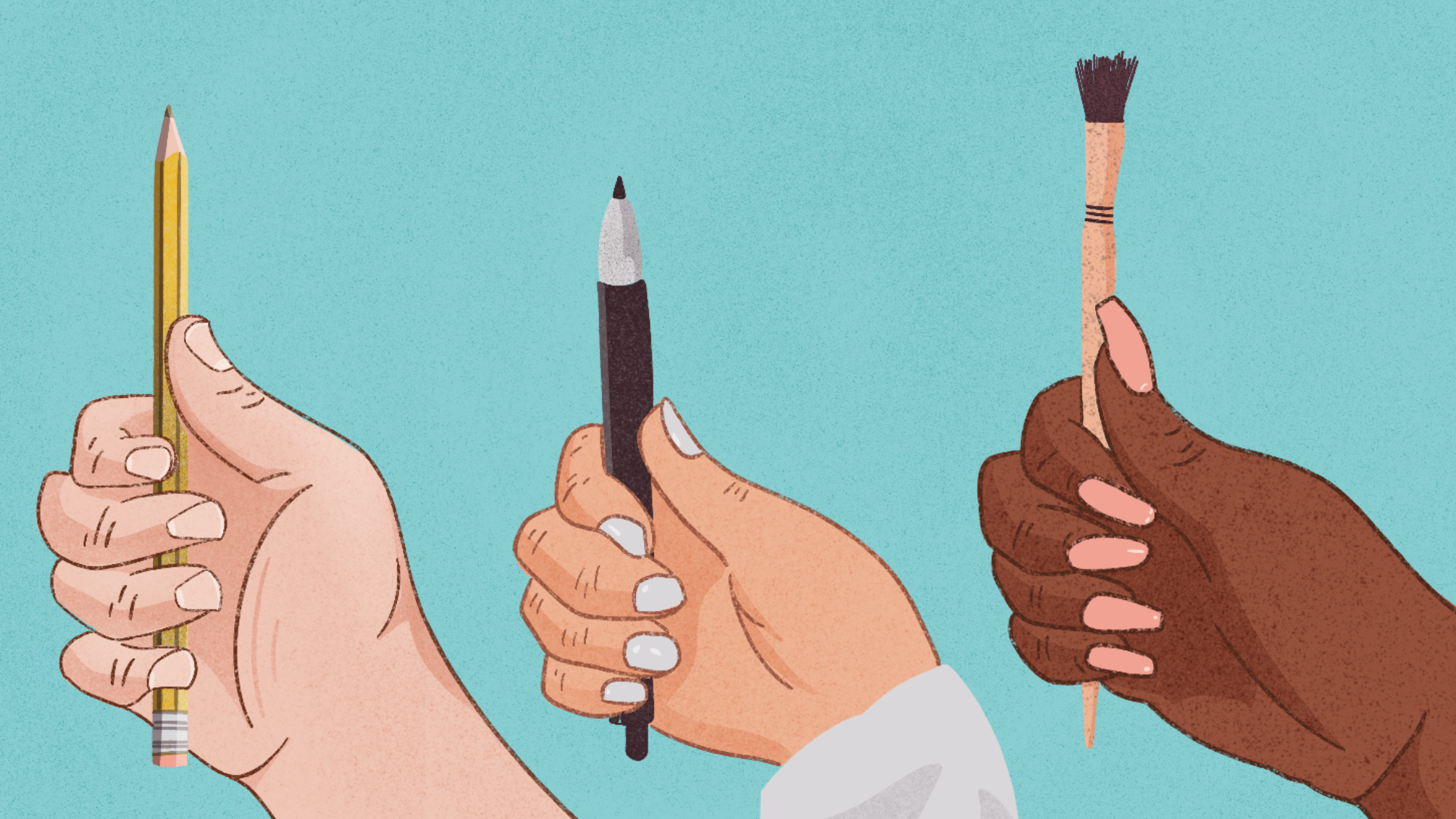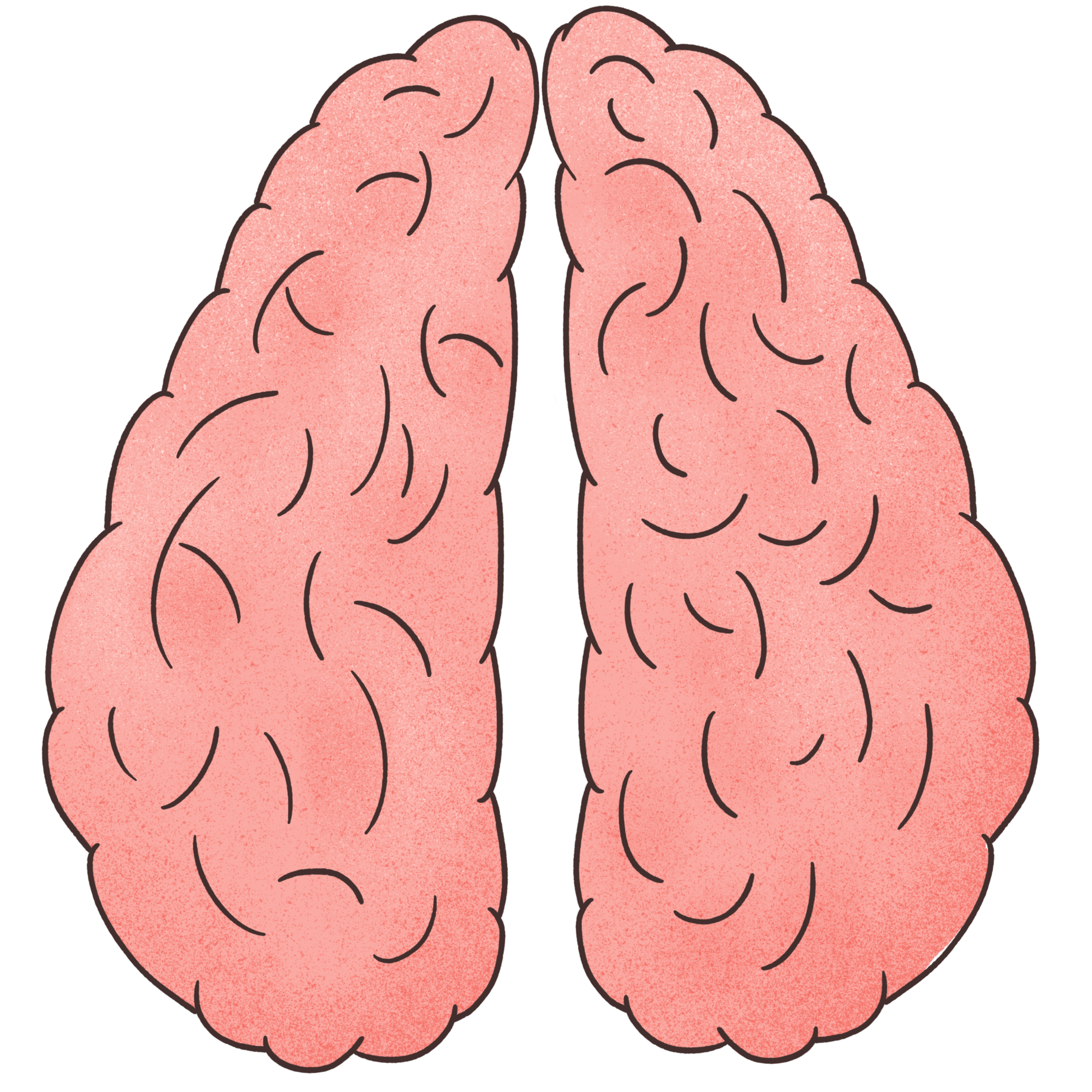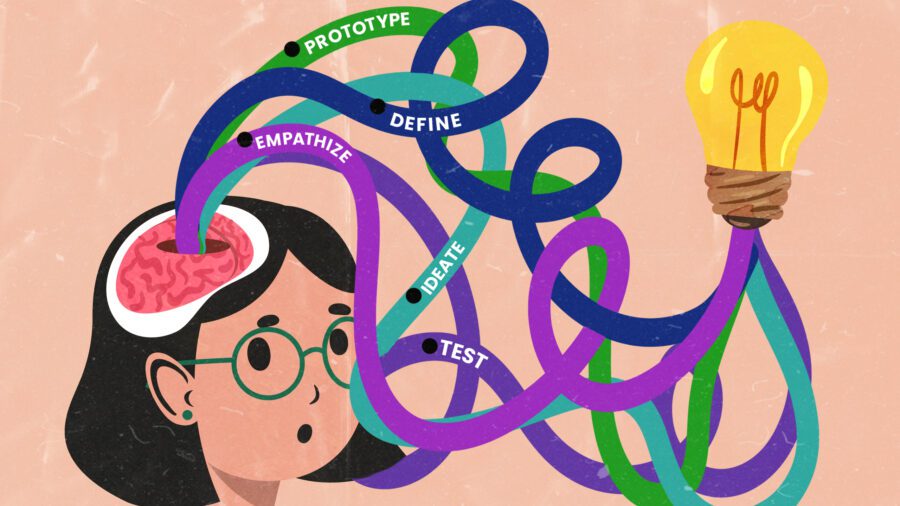
Everyone Is an Artist: How to Embrace Your Creativity to Achieve MORE
Do you see yourself as a creative person, or do you see yourself as more of a scientific person? What if it wasn’t that narrow of a question? What if being a creative person and being a science person weren’t exclusive from one another?
Many people are raised with the idea that creativity and science and logic fall under two separate categories — you are either a creative person or you’re good with numbers. Often due to parental expectations or the education system, people feel that they must fit in one of these two categories. However, this isn’t how creativity works, and it’s this way of thinking that causes many people to believe they aren’t creative and never will be.
So what’s the truth? How does creativity in the brain work?
First, Let’s Talk Science
Since the 1960s, brain lateralization has been at the forefront of how scientists viewed creativity in the brain. Research on epileptic patients who had their left and right brain hemispheres surgically severed as a last resort were presented with stimuli to their right and left hemispheres separately. Researchers found that the two sides of the brain process stimuli in very different ways.
Initially, they found that the right hemisphere was essential for processing emotions, and the left hemisphere was used for language and rational thought. For many years, this research was used to justify the idea that the two sides of the brain operate separately and are responsible for different things entirely.
The patients being observed, however, had brains that had been surgically altered and were not good representations of neurological activity in healthy brains. It wasn’t until MRI scans became available in the 1990s that we started to understand what healthy brain activity looked like when processing creative thought.
Researchers quickly found that the corpus callosum — the thick bundle of nerve fibers connecting both hemispheres — was responsible for creative thought. Since then, science has come to understand that both hemispheres of the brain must work together to achieve creativity.

Why Is It Important to Be Creative?
It’s no understatement to say that creativity is one of the most important attributes a person can have. In fact, there is evidence to support the fact that creativity may lead to a longer life. More than that, many of the most common health problems can be traced to disengagement from the world around us.
Creative thinking keeps us engaged in our environment and pushes us to interact and learn, which can keep us from feeling depressed. Engaging in creative exercises can also improve our brain’s problem-solving capabilities which are vastly useful in any career.
What Does It Mean to Be Creative?
Creativity is so much more than painting a picture or playing an instrument. Creativity touches all aspects of our lives and is what drives our species to progress and develop. For example, do you think it was creativity or science that led to the invention of the smartphone?
While it definitely needed science, creativity is what fueled the smartphone’s development. Thousands of people’s creative thinking went into this invention and continues to propel the industry every year with new products.
Creativity is not a trait you are born with, rather it can be likened to a muscle — you must exercise it to keep it strong. Research tells us that everyone has the ability to think creatively, but how can you cultivate creativity in your life if you have been a “science person” your whole life? Here are some tips to turn creative thinking into a habit.
Let Your Mind Wander
It’s common for someone who has viewed themselves as a “science person” their whole life to self-police themselves when their mind strays from the task at hand. It’s important to stop doing this and allow your mind to wander from time to time.
Your thoughts are ultimately what will make you more creative, so thinking of abstract ideas or scenarios can cultivate a sense of creativity within yourself that you wouldn’t find if you were cutting off any train of thought that deterred you from work.
You may try journaling your thoughts and ideas as a way to nourish this creative thinking and revisit your ideas later. Another effective way to encourage creative thinking is blue-sky thinking. This refers to the process of allowing yourself to brainstorm without limitations.
Let your ideas wander freely without being concerned about cost, effort, or resources. This will steer you away from self-limiting beliefs. Keep in mind, letting your mind wander doesn’t mean getting distracted. Rather, you are setting intentional time for yourself to think creatively.
Reduce Distraction
Your brain is going to have a much harder time focusing if there are things in your workspace that are distracting you. You know what you need to think clearly and work effectively, so create a workspace for yourself that’s uniquely comfortable and free of distractions. Free up space in your brain for creativity by tidying up your area.
Join In 200 Million+ On The Journey to Greatness
Practice Mindfulness
Everyone gets stressed from time to time! Life can get crazy and it’s difficult to ground yourself back in reality when you have a million different things going on. You’re also not going to think creatively if you are stressed out, so consider trying some simple breathing meditations to practice mindfulness and plant yourself firmly in the present moment. Headspace is an excellent app to start meditating with. This app offers tons of resources to walk you through a successful meditation.
Find Your Passion
Creativity is a hard thing to force. If you try to think creatively about something you don’t enjoy, you’re going to have a hard time. This is why it’s so important to find something you’re passionate about. Take time to genuinely think hard about what you love.
What are you thinking about as you fall asleep at night? What’s the first thing on your mind when you wake up? Take that and pick it apart. Find what it is that brings you such joy. Odds are that once you have figured out what you’re passionate about, creativity will pour out of you.
Observe
Our ability to think creatively is closely tied to how we perceive our surroundings. This is more than just absent-mindedly looking at the world around you. Take a journal with you to a local park with a large amount of visual stimuli. Look at all the little things you see — the people, nature, the weather — and try to find the connections between them. Pay close attention to the smallest nuances, because they will become ways you can fuel your creativity later.
Change Your Environment
A stagnant environment can zap all of your creativity and inspiration right out of you. Consider a change of scenery to amplify those creative thoughts that are being suppressed by your environment. Many people find that a bustling and busy environment encourages creative boosts, so try working from a coffee shop or cafe one day out of the week and see how that affects you.
If you aren’t the type of person who benefits from a busy environment, focus on your own workspace at home. This is especially personal for everyone and will depend entirely on your preferences, but having a space that you only use to work from or be creative is essential to maintaining creativity.
Learn Something New
When was the last time you learned about a topic that was totally unfamiliar to you? Ancient history, at-home beekeeping — you name it! Research shows that gaining knowledge about unfamiliar topics encourages new ideas and creative thinking.
It doesn’t have to be something that directly pertains to your line of work, it just has to be something you’re interested in. Even if you don’t see how the information will benefit you now or later in life, this process is important to strengthen the interconnectedness of your brain. Khan Academy is just one of many free websites with a vast library of instruction on a diverse range of topics.
Challenge Yourself
Challenges can act as a catalyst for creative problem-solving and can push your brain to think in abstract ways. For example, if you try to open a door and find that it’s locked, your brain will automatically provide you with ideas on how to solve the problem. Shaking the handle, using force, or trying the old credit card trick are all ways your brain may try to overcome the obstacle.
Your brain does the same thing when you provide it with an unfamiliar challenge. Have you ever been to an escape room? If so, you probably noticed an uptick in creative thinking because your brain was attempting to solve an unfamiliar challenge. You can do something similar in your work by presenting yourself with a broad question like “how can I end poverty?” Allow yourself to brainstorm ideas that may not be practical just to foster creative thinking.
Embrace Your Full Creative Potential
You no longer have to sell yourself short by thinking you’re merely a right or left-brained person. Say goodbye to limiting beliefs and fully embrace your creativity. Understand that creativity is a part of everyone’s lives and is not reserved only for the arts.
Daydream, practice mindfulness, and push yourself to your creative limits. By following these simple examples, you are on your way to embracing your inner creativity.
Incorporate creative thinking into every avenue of life and lead yourself to greatness!
Greatness Authors
Greatness Authors is a collection of writers, thinkers, curiosity experts, and students of the world who are committed to bringing you the most up-to-date, impactful, and inspiring information surrounding Greatness topics.

Redefining Poetry: How Instagram Sensation Rupi Kaur Showed That Poetry Is for Everyone

The Young Professional’s Guide to Advocating for Yourself at Work & Setting Healthy Boundaries

Olympian Yusra Mardini’s Incredible Story of Resilience, Rescue, and Refugee Rights

A Beginner’s Guide to Effortlessly Attracting Money and Growth Opportunities

Psychologist Edith Eger’s Inspirational Journey to Find Forgiveness and What It Means for You











